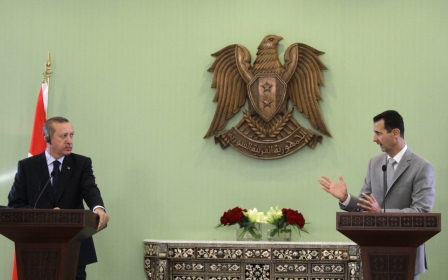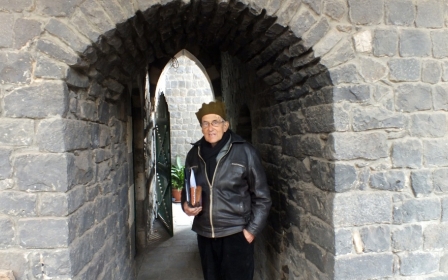Assad forces push further into Homs as rebel position weakens

HOMS - The Syrian army has advanced further around rebel-held areas of the Old City of Homs, as a car bomb blew up on Friday killing 14 people.
Like several other locations across Syria, Homs been under siege from Assad’s forces for nearly two years. Friday's push by the army is seen as potential game-changer in breaking the control of the 1,200-strong rebel presence in the city.
The fall of Homs to Assad was inevitable due to dividions between the opposition fighting within the city, Aboud Dandachi, a Syrian writer and commentator, told the Middle East Eye on Friday.
“It’s been a long time coming,” he said. “The problem was that when you talk about Homs, you weren’t actually talking about an entire city rising up as one. It was always just different neighbourhoods left to their own devices. . . They were never organised, they were never co-ordinated and so the regime managed to take each neighbourhood at its convenience.”
A former resident of Homs, Dandachi and his entire family fled the city after the regime began assaulting Insha'at, his neighborhood which borders the area called Baba Amr. “The whole time that Baba Amr was getting hit by artillery," he said, "the other [rebel] brigades and the rest of the city, did absolutely nothing. And this is what’s happened to each and every other single brigade.”
New MEE newsletter: Jerusalem Dispatch
Sign up to get the latest insights and analysis on Israel-Palestine, alongside Turkey Unpacked and other MEE newsletters
The army has primarily been advancing by capturing buildings with the intention of isolating the rebel districts, Rami Abdel Rahman, director of the pro-opposition Syrian Observatory for Human Rights, told AFP. So far, Rahman said, the regime has only captured buildings rather than whole streets and fighting was continuing.
"There are street battles, but the loyalist forces are not advancing much because the buildings are mined," he said. The rebel fighters in Homs were unlikely to leave any time soon and that “they want to fight until the end,” he added.
On Thursday, UN-Arab League envoy Lakhdar Brahimi urged the Assad regime and opposition forces to re-start negotiation to end the siege, which has cost thousands of lives since it began in 2011.
As the MEE reported earlier this week, negotiations between representatives of President Bashar Assad and besieged fighters broke down earlier this month.A document leaked on Facebook by the rebel’s negotiating team says that a “blueprint deal had been agreed to bring about an end to the bloodshed” but “regime forces want to impose a security solution no matter what the barbaric consequences are."
A framework for the deal was said to have been agreed in a meeting on 10 April, which involved the remaining fighters in Homs leaving with only their personal arms. The rebels’ negotiating team were due to meet with intelligence officials on 11 April to ratify the deal, but the meeting failed to take place for unexplained reasons.
Brahimi said it was “a matter of deep regret that negotiations were brutally stopped and violence is now rife again when a comprehensive agreement seemed close at hand.” In February, 3000 people were evacuated, in a UN-led operation, from rebel areas in the city.
“This is the end of open confrontation with the regime,” said Dandachi. “It’s going to move to an urban guerrilla warfare, terrorism if you like, the kind that Northern Ireland experienced. Taking on the regime openly, putting up checkpoints openly, was the most ridiculous idea that anybody every came up with in Homs. They did not have the weapons, they did not have the ability to take on the regime openly.”
He predicts that Friday's car bomb explosion is a template for future anti-regime violence. “This was absolutely predictable. One thing about Assad is that he realises that after the big military manoeuvres are over, he is going to have to confront an enemy that is more underground. Urban guerrilla warfare, so to speak. That’s the kind of war that he’s going to have to fight now.”
Middle East Eye delivers independent and unrivalled coverage and analysis of the Middle East, North Africa and beyond. To learn more about republishing this content and the associated fees, please fill out this form. More about MEE can be found here.




